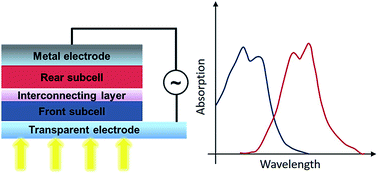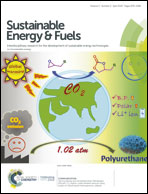Tandem structure: a breakthrough in power conversion efficiency for highly efficient polymer solar cells
Abstract
Organic polymer solar cells (PSCs) have the advantages of low cost, light weight, and solution processability for application in large-area flexible devices, and thus have attracted great interest and been extensively studied in the past 20 years. Very recently, a series of inspiring efficiency breakthroughs in polymer tandem solar cells (TSCs) have been reported, which not only exhibit great potential to achieve higher PCE, but also make this topic very promising despite their scientific and technological challenges. TSCs consisting of several sub-cells with complementary absorption spectra are stacked on each other and connected in series or parallel via an interconnecting layer (ICL), which offer an effective way for PSCs to overcome their single-junction limitations and further improve their device power conversion efficiency (PCE). Herein, we aim to present a comprehensive review of the recent developments in polymer TSCs, enumerate the current problems and challenges that they face, and suggest a series of countermeasures for their future development. In addition, an in-depth understanding on the operation mechanism of polymer TSCs, the working principle of the ICL, a variety of absorbing materials with complementary absorption spectra and the external quantum efficiency characterization problems in polymer TSCs are discussed systematically. Finally, we present their future prospect. We believe that polymer TSCs with high performance and long-term stability have bright commercial application prospects.



 Please wait while we load your content...
Please wait while we load your content...